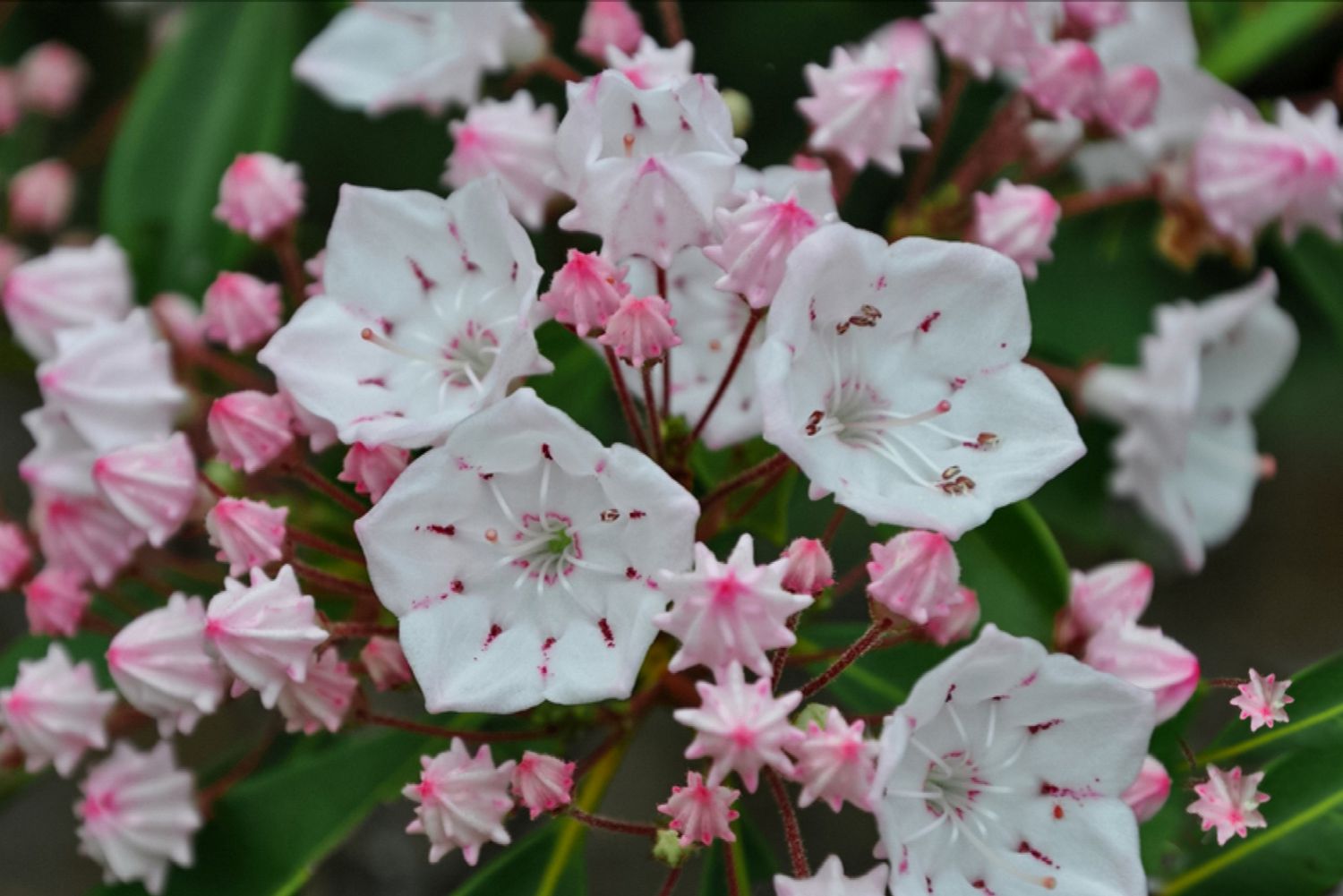With its clusters of showy pink and white flowers, mountain laurel (Kalmia latifolia) is undoubtedly one of the most beautiful flowering shrubs in North America. However behind its visual appeal lies a dark secret – all parts of this plant are highly poisonous. Even just touching the mountain laurel may cause harmful effects in humans.
In this comprehensive guide, we’ll explore the toxicity of mountain laurel and answer the key question is mountain laurel poisonous to touch? Read on to learn about the dangers of this ornamental plant and how to safely enjoy its beauty without risking your health
Mountain laurel is an evergreen shrub native to the eastern United States. Growing up to 15 feet tall, it produces delicate flowers ranging from white to pink to crimson. The glossy elliptical leaves provide year-round greenery.
While visually stunning, every part of the mountain laurel plant contains grayanotoxins. These toxic compounds disrupt proper nerve signal transmission, inducing muscle paralysis, convulsions, and even death at high doses.
Livestock have died from browsing on mountain laurel leaves. Even honey made from the plant’s nectar can be dangerous. So while mountain laurel deserves a spot in woodland gardens, it must be handled with care.
Is Mountain Laurel Poisonous to Touch?
The simple answer is yes – touching the mountain laurel plant can cause poisoning symptoms. Contact with the leaves, stems, flowers or sap may irritate the skin or even be absorbed into the body through cuts and abrasions. Reactions range from mild to severe.
Contact dermatitis is uncommon with mountain laurel. Some people may develop a localized rash from handling the leaves and stems. Wearing gloves when pruning mountain laurel is recommended to prevent skin irritation.
The greater danger is accidentally ingesting plant material when touching mountain laurel. Poisoning has occurred from people inadvertently rubbing their eyes or mouth after contact. Carefully washing your hands after touching any part of the plant is crucial.
Children are especially vulnerable to poisoning from mountain laurel. The sweet nectar attracts kids, who may chew on the flowers or lick their fingers after playing with the tempting shrub. Vigilant adult supervision is a must around this toxic plant.
Dangers of Ingesting Mountain Laurel
While touching mountain laurel may cause minor reactions, ingesting any part of the plant can be deadly. Here’s an overview of the dangers:
-
Eating the leaves, stems or flowers induces burning of the mouth, drooling, vomiting, diarrhea, tremors, seizures and paralysis.
-
The plant’s nectar contains the highest concentration of toxins. Just a few drops on the tongue or in the eyes can cause rapid pulse, convulsions, coma and death.
-
Livestock have died from grazing on mountain laurel leaves. The toxins cause excessive salivation, trembling, impaired vision and inability to stand.
-
Honey made from mountain laurel nectar contains grayanotoxins and can poison humans. Even small amounts can cause low blood pressure, fainting, nausea and unconsciousness.
So while the mountain laurel flower may look like a tasty treat, consuming any part of this plant is extremely dangerous. If you suspect mountain laurel poisoning, call your local poison control center or emergency services immediately. Rapid treatment is critical.
Staying Safe Around Mountain Laurel
While mountain laurel is perilous when ingested, you can still safely enjoy this ornamental shrub with proper precautions:
-
Clearly label mountain laurel with warning signs in gardens and landscapes. Alert all family and guests, especially curious children, about the plant’s toxicity.
-
Wash your hands thoroughly after touching mountain laurel. Supervise kids to ensure no parts enter their mouth. Avoid rubbing your eyes until hands are cleansed.
-
Wear gloves and long sleeves when pruning mountain laurel branches. The sap may irritate bare skin.
-
Keep mountain laurel away from grazing livestock and pets. Fence off plantings or situate in inaccessible areas of gardens.
-
Dispose of pruned branches, dead leaves and spent flowers in enclosed yard waste bags. Never compost toxic plant parts.
With vigilance and common sense, the visual splendor of mountain laurel can be safely enjoyed. Just be aware of the dangers lurking within this striking native plant.
Keeping Your Kids Safe Around Texas Mountain Laurel
Supervision is the cornerstone of child safety around garden plants. To prevent little ones from ingesting toxic Texas Mountain Laurel seeds, maintain a constant vigil. You could set up a play area away from the plant or use baby gates or other barriers to keep kids from getting too close. Ensure that the plant area is well-lit and free from tripping hazards, allowing for clear visibility.
What Makes Texas Mountain Laurel a Concern for Kids?
The toxicity of Texas Mountain Laurel lies in a compound called cytisine, prevalent in both leaves and seeds. Cytisine is a quinolizidine alkaloid that, if ingested, can wreak havoc on the human body. While livestock may avoid the leaves, the seeds—with their higher cytisine concentration—are a different story. Theyre like tiny ticking time bombs, especially if chewed, which releases the toxin.
Mountain Laurel – More Than a Rhododendron – Kalmia latifolia
FAQ
Can you get sick from touching mountain laurel?
How much mountain laurel is toxic?
Are laurel leaves poisonous to touch?
Is it illegal to pick mountain laurel?
- The Ultimate Guide to Growing Strawberries in Raised Beds - August 8, 2025
- No-Dig Garden Beds: The Easiest Way to Grow a Beautiful Garden - August 6, 2025
- How to Protect and Preserve Wood for Raised Garden Beds - August 6, 2025

